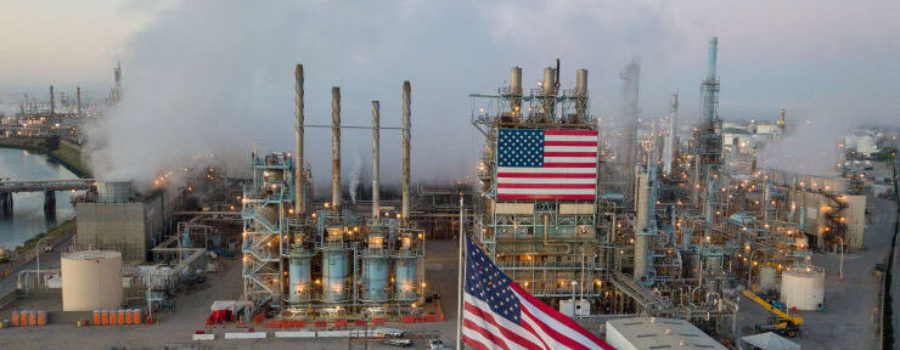MORE CRUDE OIL WILL BE HITTING THE MARKET IN JULY
This week, Saudi Arabia announced it would not be sustaining their voluntary production cuts (extra cuts on top of OPEC+ agreed upon curbs) due to demand recovery, joining Mexico and Libya in projected production increases. In the coming weeks, more than 2.4 million barrels of oil a day will be entering back in to the market when including US producers bringing back online an estimated 0.5 million barrels of production.
After April’s record oil price crash due to the Russia-Saudi price war and coronavirus impacts, the countries who make up OPEC and certain non-member countries agreed to produce less (about 10 million barrels a day less) to keep oil prices from cratering even more. This has been a common theme over the history of OPEC (controlling oil prices through coordinated efforts of key countries), however crude prices below $40 puts nearly every country below estimated break-even prices needed for government budgets.
The EIA had an interesting article this week regarding global break-even prices if you’d like to read more on it. This data really drives home how Russia is able to influence the market more than before (high production rates plus low break-even prices).

How this will affect the market will really depend on whether or not a “second wave” of COVID lock-downs will happen, and how strictly OPEC+ countries are ACTUALLY following production cuts (the data is difficult to confirm real-time). For now, the market seems split down the middle with daily wobbles in price causing WTI to hover around $37/bbl.
WHAT IS “OPEC+” AGAIN?
OPEC+ is not an official term, but a short hand for “OPEC plus other non-member countries.” The Organization of Petroleum Exporting Countries includes 13 members as of today, along with notable non-member countries such as Russia, Mexico, and Kazakhstan. Together, these countries control roughly 90% of global oil reserves and over 50% of current oil supply.

You can think of “reserves” as how big each country’s tank is, and “production supply” as how big the hose connected to it is. The darker the color in the map below, the more production each country supplies to the market. Did you know the US is actually the top oil producing country? This is why US activity, OPEC activity (due to Saudi Arabia) and Russian activity (the primary “plus” non-member country in OPEC+) matters so much to global supply and demand.

REDUCED REFINING PLUS INCREASED TRAVEL COULD SPIKE GASOLINE PRICES THIS SUMMER

One trend we’re watching closely is in crude oil refining. Refining margins or “crack spread” (the increase in value of a barrel of oil after refining into items like gasoline, diesel, and jet fuel, after accounting for refining costs) is not following the crude oil rally, causing refineries to remain operating at limited capacity. Prior to COVID-19, the average refinery utilization was 91% and dropped down to 68% in April 2020. As of today, utilization is only at 74%. The margin for refiners is only half what it was this time last year with the lack of demand for diesel and jet fuel the main cause of this disconnect (which makes sense, since only half of their refined products have any demand).
“One word of caution is if we look at the rally we’ve seen in crude oil prices, it’s been amazing, but the big uncertainty is if you look at refinery margins, they are very weak across the board across all regions,” Warren Patterson, head of commodities strategy at ING. “And what that suggests is that maybe demand isn’t recovering as quickly as many had anticipated, or at least it’s not keeping up with the move higher that we’ve seen in crude oil prices.”

Why is this important? Gasoline usage is going up, with a 18% increase since mid-May. If refiners aren’t able to increase how much is refined due to too slim of margins, gasoline supply won’t be able to keep up with demand. Every barrel of crude refined to create needed gasoline also further floods the market with unwanted refined products like jet fuel.
BANKRUPTCY WATCH: CHESAPEAKE ENERGY AND CALIFORNIA RESOURCES COMPANY
Chesapeake Energy’s stock price (CHK) crashed this week after rumors of the company filing bankruptcy as early as this week. This will be the largest US company to fall this year, with COVID-19 price impacts being the final blow. Chesapeake is active primarily in the Marcellus (Appalacian), Haynesville (East Texas), and Eagle Ford (South Texas).
California Resources Company (CRC) was extended more time (until June 30th) to pay its impending debt payment, however most analysts are still expecting the company to seek bankruptcy protection in the next coming weeks. CRC is primarily a California producer after spinning off from Oxy in 2014.
If you have royalties with CHK or CRC, this is more of an FYI rather than a call to action. Typically royalty owners are one of the most protected classes in bankruptcy cases, meaning if anyone gets paid, those owed royalties are first in line. Non-executive employees and vendors critical to maintaining the asset (everything from utility companies to workover expenses) are also typically protected during a bankruptcy in order to preserve value. Unsecured debt is at the bottom of the list, and THAT’S where you DON’T want to be through a chapter 11.









